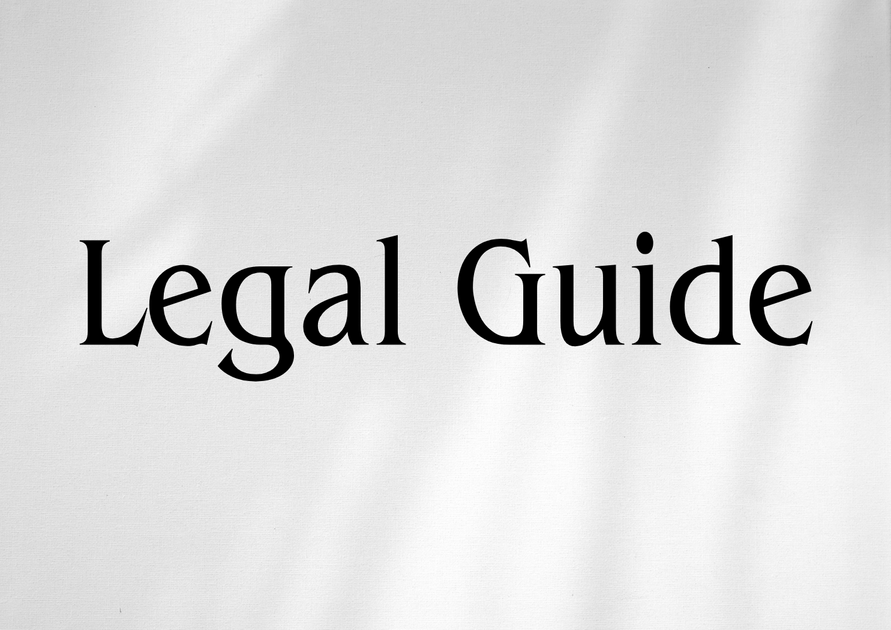Introduction: Navigating the UAE Arbitration Landscape
The United Arab Emirates (UAE) continues to evolve as a leading hub for international dispute resolution. With its dynamic business environment, the adoption of arbitration as a preferred mechanism for resolving commercial disputes has grown significantly. Two of the most prominent arbitral institutions in the UAE—the DIFC-LCIA Arbitration Centre and the Dubai International Arbitration Centre (DIAC)—have recently undergone critical transformations, including the unification of arbitration administration under DIAC and the evolution of their respective rule frameworks.
Understanding the differences and practical implications between the DIFC-LCIA and DIAC Arbitration Rules is now more relevant than ever. This article provides an in-depth, consultancy-grade legal analysis, drawing on official UAE legal sources and regulatory updates as of 2025. We aim to guide executives, in-house counsel, human resources leaders, and legal practitioners through the nuanced distinctions between these regimes, with special attention to compliance strategies, risk management, and best practices in light of recent legal reforms and the ongoing consolidation of arbitration in Dubai.
Table of Contents
- Overview of Arbitration in the UAE: Legal Framework and Recent Developments
- Key Differences between DIFC-LCIA and DIAC Arbitration Rules
- Core Procedural Provisions and Practical Insights
- Jurisdiction, Seat, and Enforcement: Strategic Considerations
- Practical Scenarios and Case Studies
- Risks of Non-Compliance and Strategic Compliance Guidance
- Conclusion: Strategic Recommendations and Forward Outlook
Overview of Arbitration in the UAE: Legal Framework and Recent Developments
The Legislative Backbone: Federal Law No. 6 of 2018 and Beyond
Arbitration in the UAE is primarily regulated by Federal Law No. 6 of 2018 on Arbitration, which aligns closely with the UNCITRAL Model Law. This law governs the recognition and enforcement of arbitral awards, provides for party autonomy, and sets standards for procedural integrity and neutrality.
Supplementing the federal framework are the free zone rules, particularly those of the Dubai International Financial Centre (DIFC), which previously hosted the DIFC-LCIA Arbitration Centre, adopting the DIFC-LCIA Arbitration Rules highly influenced by the LCIA’s global standards. In February 2022, Dubai Decree No. 34 of 2021 came into force, consolidating institutional arbitration in Dubai under the new DIAC. This reform saw the dissolution of the DIFC-LCIA Arbitration Centre, ushering in DIAC as the sole arbitral institution for both onshore Dubai and the DIFC, albeit with legacy DIFC-LCIA arbitrations continuing under DIAC administration but governed by their original rules unless otherwise agreed.
Relevance for Businesses and Stakeholders
The consolidation of Dubai’s arbitration landscape has strategic and operational implications for businesses. Companies with pre-existing DIFC-LCIA clauses must now navigate arbitration proceedings under the supervision of DIAC while still applying the DIFC-LCIA rules to their ongoing disputes. Conversely, new disputes initiated post-Decree are subject to DIAC rules, which were substantially revised in 2022 to enhance efficiency, transparency, and alignment with international best practices.
With these developments, understanding which rules govern your arbitration—and the effects of those choices on procedure, timing, costs, and enforceability—is critical to effective dispute resolution and compliance under UAE law.
Key Differences between DIFC-LCIA and DIAC Arbitration Rules
Legacy DIFC-LCIA Rules: An Overview
The DIFC-LCIA Arbitration Rules, last updated in 2016, offered a framework based on the London Court of International Arbitration (LCIA) model, tailored for the DIFC’s common law environment. They provided for party autonomy, confidentiality, limited grounds for challenge, and a clearly delineated process for the constitution and conduct of arbitral tribunals.
DIAC Arbitration Rules: Major Revisions in 2022
The new DIAC Arbitration Rules, effective from March 21, 2022, marked a comprehensive update, introducing expedited procedures, emergency arbitrator provisions, and more refined rules for the appointment and removal of arbitrators. The rules also place special emphasis on digital process management and cost efficiency, aligning DIAC with leading international arbitration standards.
Comparative Table: DIFC-LCIA vs DIAC Arbitration Rules (as of 2025)
| Aspect | DIFC-LCIA (2016) | DIAC (2022) |
|---|---|---|
| Administrative Institution | DIFC-LCIA Arbitration Centre (now administered by DIAC for legacy cases) | DIAC (sole arbitration institution in Dubai & DIFC post-2022 Decree) |
| Application | Legacy agreements prior to DIAC decree; ongoing arbitrations | All new Dubai & DIFC arbitrations post-Decree |
| Language of proceedings | English (default, subject to party agreement) | English or Arabic (as agreed or specified) |
| Appointment of Arbitrators | By LCIA Court, with party input | By DIAC Court of Arbitration; clearer challenge/removal process |
| Expedited Proceedings | Limited provisions | Explicit expedited rules for claims below AED 1 million or by party agreement |
| Emergency Arbitrator | No separate provision | Emergency arbitrator available for urgent interim relief (Article 2 of DIAC Rules) |
| Virtual Hearings | Permitted, but limited guidance in rules | Explicitly facilitated & encouraged |
| Costs and Fees | Ad valorem and arbitrator hourly rate | Transparent schedule of administrative fees and tribunal remuneration |
| Challenging Arbitrators | On defined grounds, via LCIA Court | Expanded criteria & process under DIAC Court’s supervision |
Visual suggestion: An infographic illustrating the main procedural differences and timeline for arbitration under each rule set.
Core Procedural Provisions and Practical Insights
Initiating Arbitration: Notices and Responses
Under both rules, arbitration commences with a written request sent to the administering institution. However, DIAC’s revised process is more streamlined, encompassing an online case submission portal, instant acknowledgment of receipt, and clear timelines for a response (Article 4 of DIAC Rules).
Consultancy Insight: Businesses should update their internal dispute protocols to align with digital filing and allow for rapid identification and escalation of arbitration notices, to prevent procedural defaults.
Formation of the Tribunal
The DIFC-LCIA rules historically allowed parties to nominate arbitrators, with final approval by the LCIA Court. DIAC’s new framework has formalized party autonomy but also empowers the DIAC Court to appoint arbitrators in the absence of party consensus, reducing deadlocks. There are specific, codified grounds for challenge and removal, minimizing bias and conflicts of interest (Articles 13–14 DIAC Rules).
Best Practice: When contracting, parties should agree in advance upon the qualifications and criteria for potential arbitrators and record these in the arbitration clause.
Pleadings and Submissions
Both rule sets provide for preliminary statements of claim and defense, followed by rounds of written and oral submissions. DIAC 2022 introduces deadlines for submissions, encouraging swift resolution. Tribunal discretion in managing the process is retained, but the newer rules offer more robust timetabling.
Expedited and Emergency Proceedings
One major innovation of the new DIAC rules is their explicit provision for expedited proceedings—permitting a sole arbitrator, a compressed timetable, and an award within three months for smaller claims or by party agreement. The emergency arbitrator mechanism also allows urgent interim measures before the full tribunal is constituted, a feature previously unavailable under DIFC-LCIA.
Practical Consideration: Parties requiring urgent relief should reference DIAC’s emergency arbitrator provision at the contracting stage to ensure interim protection is available in future disputes.
Cost Allocation and Fee Transparency
DIAC’s clear fee schedule improves cost predictability versus the previous mixture of ad valorem and hourly arbitrator rates under DIFC-LCIA rules. This enables better budgeting for dispute management, especially for organizations involved in multiple arbitrations or with high-volume contracts.
| Scenario | DIFC-LCIA Fee Approach | DIAC Fee Approach |
|---|---|---|
| Small Claims (AED 500,000) | Minimum fee + hourly arbitrator fee | Flat administrative fee + fixed sole arbitrator fee |
| High Value Dispute (AED 10 million) | Variable administrative percentage + hourly | Transparent cap based on value; published schedule |
Visual suggestion: A visual flowchart of the case management process under DIAC rules.
Jurisdiction, Seat, and Enforcement: Strategic Considerations
Jurisdiction and Seat of Arbitration
The choice of seat (legal place of arbitration) has major implications for the law applicable to the arbitration procedure and the supervision of courts. Historically, DIFC-LCIA arbitrations benefited from the DIFC’s independent common law courts. With DIAC now covering both onshore Dubai and DIFC, parties can expressly select their seat—opting for the civil law framework of Dubai or the common law system of DIFC. This flexibility continues, but requires precise drafting in the arbitration clause.
Compliance Guidance: Clearly state your preferred seat and governing law in all contracts. Ambiguity can result in lengthy preliminary disputes and risk non-enforcement.
Recognition and Enforcement of Awards
Enforcement within the UAE is subject to Federal Law No. 6 of 2018. Awards rendered in the DIFC or under DIAC can be enforced through local courts (DIFC or Dubai), leveraging the reciprocal recognition regime affirmed by the Dubai courts. This is further strengthened by the UAE’s accession to the New York Convention (1958), facilitating the recognition of arbitral awards globally.
Risk Reduction: Ensure compliance with notification, due process, and non-contravention of UAE public policy, as UAE courts reserve the right to set aside awards that breach these fundamental norms.
| Enforcement Forum | Key Features |
|---|---|
| DIFC Courts | Internationally oriented; quick process; direct recognition |
| Dubai Courts (onshore) | More formal; strict adherence to UAE Arbitration Law; possible public policy review |
| Foreign Jurisdictions | Via New York Convention; depends on compliance with award formalities |
Practical Scenarios and Case Studies
Case Study 1: Cross-Border Construction Dispute
Scenario: A UK-based contractor and a Dubai developer entered into an engineering contract governed by DIFC law with a DIFC-LCIA arbitration clause. In 2023, a dispute arose. The parties commenced arbitration; DIAC assumed administrative control, applying DIFC-LCIA rules.
Practical Insights: The legacy clause was honoured, but parties needed to quickly update counsel and prepare for DIAC’s digital case portal. Despite location changes, the ability to seat the arbitration in DIFC preserved international enforceability.
Case Study 2: Expedited Resolution under DIAC
Scenario: Two UAE-based SMEs had a commercial dispute under a 2024 contract citing DIAC Rules. The claim was AED 800,000. DIAC appointed a sole arbitrator under its expedited rules, with submission deadlines condensed and a final award rendered within three months.
Key Takeaway: New DIAC rules enabled prompt resolution and cost savings, underlining the value of tailoring arbitration clauses to dispute size and nature.
Hypothetical Example: Emergency Arbitrator Use
Scenario: A multinational tech company urgently seeks interim measures to freeze assets in a licensing dispute. By invoking DIAC’s emergency arbitrator, relief is swiftly obtained within days, minimizing risk before full tribunal commencement—an option unavailable under former DIFC-LCIA rules.
Visual suggestion: Timeline infographic demonstrating standard vs expedited vs emergency procedures under DIAC.
Risks of Non-Compliance and Strategic Compliance Guidance
Risks of Non-Compliance
- Procedural Missteps: Failing to update arbitration clauses post-Decree can lead to challenges over applicable rules, tribunal appointments, or seat, risking delays and unenforceable awards.
- Jurisdictional Confusion: Reliance on outdated references to the DIFC-LCIA Centre may complicate enforcement or invite challenges under Article 53 of the UAE Arbitration Law (Federal Law No. 6 of 2018).
- Missed Interim Relief: Omitting reference to emergency arbitrator options can result in missed opportunities for critical temporary measures.
- Cost Uncertainty: Unclear fee apportionment exposes parties to surprise expenses and longer timelines.
- Documentation Gaps: Improper or incomplete notification, document production, or response timings may invalidate the arbitration or the resulting award under UAE law.
Compliance Checklist for UAE Organizations
| Compliance Action | Consultancy Recommendation |
|---|---|
| Contract Clause Updates | Immediately review and amend all arbitration clauses to reference DIAC and specify seat/language/law and procedure. |
| Internal Protocol Review | Align protocols to DIAC’s digital submission and expedited processes; train staff on emergency arbitrator availability. |
| Cost Planning | Evaluate dispute frequency and values to select the most efficient arbitral process under DIAC rules. |
| Dispute Prevention | Consider mediation under DIAC’s adjunct procedures as a first step prior to arbitration; reduces cost and preserves relationships. |
Visual suggestion: Compliance checklist graphic illustrating the above actions.
Conclusion: Strategic Recommendations and Forward Outlook
The consolidation of arbitration administration in Dubai under DIAC, alongside the introduction of enhanced DIAC Arbitration Rules, has transformed the UAE’s dispute resolution landscape. While legacy DIFC-LCIA clauses remain operational for pre-Decree contracts, all new arbitrations default to the DIAC rules, which now provide expedited and emergency relief mechanisms, digital management, and a transparent cost framework.
For businesses and practitioners in the UAE, the imperative is clear: audit all dispute resolution clauses for compliance, specify seat and governing law, and actively leverage DIAC’s new procedural tools to achieve efficient and enforceable outcomes. The coming years will see DIAC’s continued rise in international arbitration rankings, particularly as the UAE sustains growth as a global trade and financial centre. Keeping abreast of legal updates—especially any future amendments to Federal Law No. 6 of 2018, Cabinet Resolutions, or DIAC guidelines—remains essential.
Best Practice Recommendation: Engage UAE-qualified legal counsel for an arbitration ‘health check’ of your contracts and compliance processes. Update training and documentation, and integrate dispute readiness into overall risk management strategies.
By remaining proactive and informed, organizations can turn the evolving arbitration landscape into a powerful strategic advantage in the UAE’s competitive, legally sophisticated environment.




